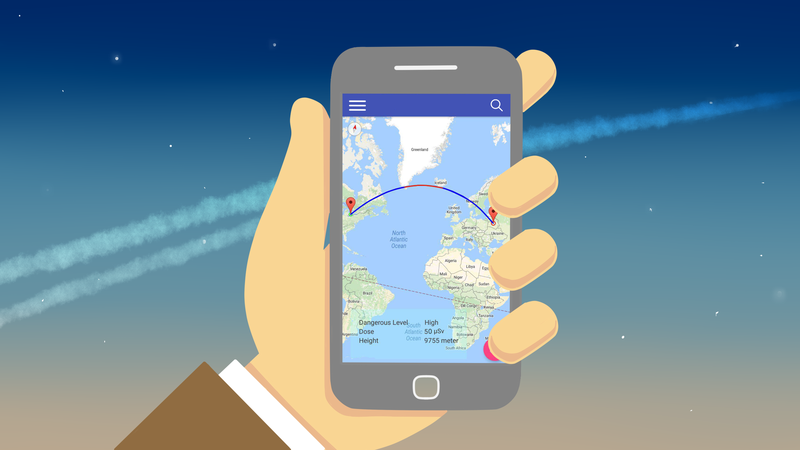Lost in the ozone | Mayday, Mayday, Mayday!
Awards & Nominations
Lost in the ozone has received the following awards and nominations. Way to go!
The Challenge | Mayday, Mayday, Mayday!
Lost in the Ozone
We provide the mobile app based on strong astrophysical background and satellite datasets that allows you to calculate the radiation dose you get during the flight.

Why is it important for YOU?
Most of us have traveled by plane at least once in the life. According to numerous statistics, today planes are the fastest, most comfortable and the safest means of transport. But are the planes really that safe as it considered to be? When we are on board of the aircraft we lose the huge part of the earth's atmosphere screening protection, which leads to a significant increase in additional radiation we get. Information on the dose received during the flight might be interesting to any user who cares about his health and in particular to the crew of the aircraft making frequent and long flights.
What about the analogues?
Today there are some services that allow us to calculate the effective dose of radiation received during the flight. However, they have plenty of drawbacks. First, most of the proposed methods do not take into account the solar particle event, which has a huge impact, especially at times of solar activity. Second, the proposed interfaces are inconvenient for the ordinary user, since they require a large number of data about the flight path.
How we solve these problems?
At the very beginning of our project development, we faced a problem: the lack of data on radiation, as well as the lack of a clear mathematical model for radiation calculation. Our team threw ourselves into the theory of physics and astrophysics and calculated the effect of the magnetosphere and atmosphere on the primary flux of cosmic rays, depending on the geographical location and altitude above sea level. Thus, the only thing remained for us was to collect data on the fluxes of various particles and to calculate the value of their energies at any point above the earth. However, at this point there was another problem: most satellites provide us with distorted data, since they fly at altitudes lower than the boundary of the magnetosphere. We found the solution by using data from satellites located at the Lagrange point. The final step was the calculation of a hypothetical flight path and obtaining a total dose of radiation for the whole flight time.
What about the UI?
We managed to minimize the amount of input data: to find out the dose you receive during the flight, you only need to enter the information about the start and destination of your trip! Moreover, our project is implemented as a simple mobile application with user-friendly interface.
Future plans
Besides adding new parameters and refinement of the mathematical model, we want to make our application as useful as possible. Our near future target is to provide data on the dose of radiation in the form of visual examples from life, such as dental shots and chest CT images. Another step is to integrate our application with air travel planning systems to calculate optimal and safe flights!
List of resources
https://www.intechopen.com/books/current-topics-in...
http://www.swpc.noaa.gov/products/real-time-solar-...
https://sohowww.nascom.nasa.gov/data/archive.html
http://www.kayelaby.npl.co.uk/atomic_and_nuclear_p...
http://www.ph.surrey.ac.uk/satellites/main/tutoria...
Project repository
SpaceApps is a NASA incubator innovation program.